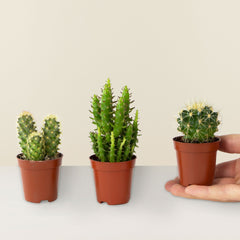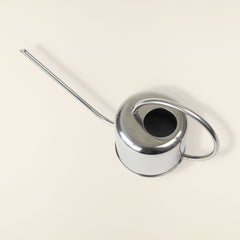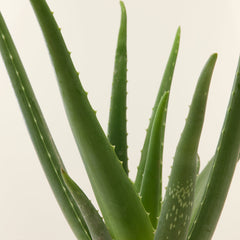5 depolluting indoor plants that purify the air in your home!
Did you know that indoor air is much more polluted than outdoor air? Indeed, many pollutants stagnate in our homes and offices, so much so that now air quality problems are considered major public health problems!
In order to remedy this what better than to use plants? And yes, in addition to decorating our interiors, green plants have the ability to make the air healthier . Nowadays, we spend most of our time locked up in our living room, bedroom or office, so it is a good idea to take advantage of the purifying properties of our houseplants.
It was in 1989 that the power of plants was scientifically demonstrated for the first time. Indeed, Bill Wolverton, an engineer at NASA, was the first to highlight the depolluting capacity of indoor plants . The scientist had worked on pollutants such as formaldehyde, toluene, benzene, xylene, trichloroethylene, carbon monoxide, or even ammonia.
But where do all its pollutants come from?
- Formaldehyde : tobacco smoke, smoke from wood stoves, furniture, fabrics, household products, glue, varnish, paint, insulation, open fireplace, carpet
- Toluene : paint, varnish, glue, solvent, carpet, parquet
- Benzene : tobacco smoke, paint, building materials, detergent, varnish, air freshener
- Xylene : paint, parquet, felt
- Trichlorethylene : chipboard, glue, paint, solvent, insulation walls, household product
- Carbon monoxide : insulation walls, tobacco smoke, combustion heating, open fireplace, gas stove, water heater
- Ammonia : fertilizer, insecticide, tobacco smoke, bleach, degreaser, cleaning product, paint, varnish
Indoor plants clean, filter and purify the air of many pollutants and toxins thanks to a very simple operation: the roots will filter and digest the pollutants and transform them into a source of nutrients. Then, by sweating the plants will release oxygen. This depollution process has a positive impact on our health since healthy air goes hand in hand with a reduction in stress, headaches, nausea, dizziness or even skin irritation.
The vast majority of plants on our planet have this depolluting function. However, some decorative plants are more suited to eliminating toxins than others.
Among those that best absorb pollutants we can find the following:
This houseplant is also called the moonflower. It is the champion in all categories of depollution: no pollutant can resist it ! Very decorative with its white flowers present throughout the year. You can place your spathiphyllum anywhere in your home.

Absorbs: Formaldehyde, toluene, benzene, xylene, trichlorethylene, ammonia as well as alcohol and acetone vapors.
This green plant has beautiful dark leaves that hang slightly downward. This is an easy-care plant from Africa. Instead, place it in your living room, bedroom or office.

Absorbs : Formaldehyde, toluene, benzene, xylene.
This species is characterized by beautiful dark leaves with a subtle red margin. As with the Janet Craig, place your dracaena preferably in your living room, bedroom or office.

Absorbs : Formaldehyde, toluene, benzene, xylene, trichlorethylene, and carbon monoxide.
Anthurium ranks second in terms of ammonia depollution according to NASA. This indoor plant loves to be watered, but be careful not to expose it to direct sunlight! Its ideal location is in the living room.

Absorbs : Formaldehyde, xylene and ammonia.
Philodendron Monstera Deliciosa
The philodendron is one of the most effective varieties in terms of pollution control. It will feel perfectly at home in your living room, where you can admire its slender size and its large, atypically shaped leaves.

Absorbs : Formaldehyde, benzene and trichloroethylene.





